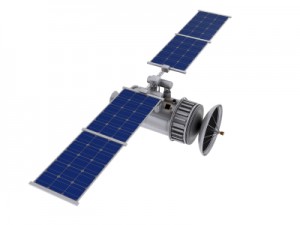Installing Your Sapling GPS Receiver for your SMA Series Master Clock
When purchasing an SMA3000 or 2000 Master Clock from Sapling, there are two options available for synchronizing a master clock to an outside time source: GPS and NTP time. Both have benefits exclusive to one and other, but maybe a particular facility is highly safeguarded and breaking through its internet firewall to receive NTP time is not an option. In this situation, utilizing GPS to synchronize a master clock allows the facility to avoid breeching its firewall but still receive highly accurate time.
However, a very important part to receiving that highly accurate time is the proper installation of your Sapling GPS Receiver. The user or technician must be aware of a few certain requirements that must be taken into account during setup and installation. If the user plans to take on this task on their own, or just wants to make sure their technician is properly installing the Sapling GPS receiver, referring to the two helpful hints below will ensure the GPS receiver will properly function.
1. Routing the RG59 Cable
With Sapling’s GPS master clock system, the connection between the master clock inside the building and the GPS receiver outside of the building is made by RG59 cabling. Normally, the cable is routed from the room in which the master clock is located, through the wall and to the outdoors where the GPS receiver is mounted. While RG59 cabling is capable of making these proper connections between the master clock and receiver, it is not invincible to the weather. In order to protect the RG59 cabling, one of two things must happen. The user’s first option is to route the cable through steel piping from when the cable exits the wall of the building until it makes the connection to the receiver. If piping is not an option, a high-temp specialty cabling will be required to protect the cable from hot weather. By protecting the RG59 wiring, interruptions in the connection between the master clock and GPS receiver due to outside influences are likely not to occur.
2. Mounting the Receiver at the Highest Point
While this is not mandatory of Saplings GPS receiver, setting a mounting point on a roof or highest point of a building or facility is highly recommended. Having the receiver open to the entire sky without any walls or structures blocking its view allows the satellite to have a better vantage point of the receiver—ensuring that the satellite will be able to pinpoint the receiver’s exact location. Making sure that there are no obstructions between the receiver and the open sky will ultimately provide your master clock with more reliable and accurate time.
In facilities where security is priority and going outside the local network is not an option, GPS receivers provide the perfect solution. Having the ability to receive highly accurate time without exposing the facility’s network to outside influences provides peace of mind to the user and still takes care of the facility’s timing needs. However, in order to ensure the GPS receiver is properly connected and communicates effectively with the satellites in the sky, observing the aforementioned tricks on installing the Sapling GPS receiver will help the user immensely during the implementation of GPS time into their facility.

